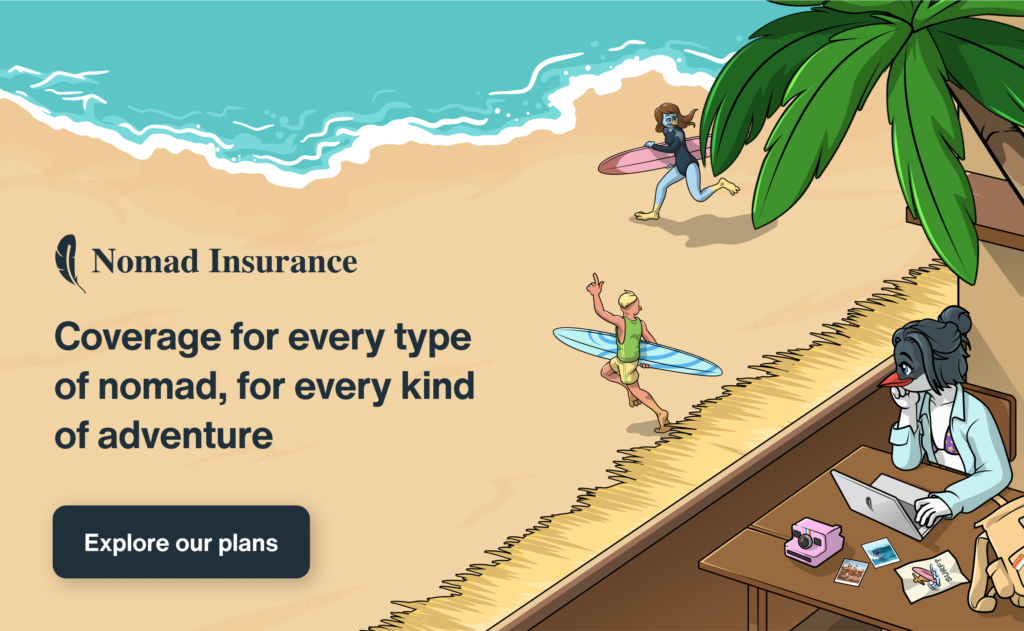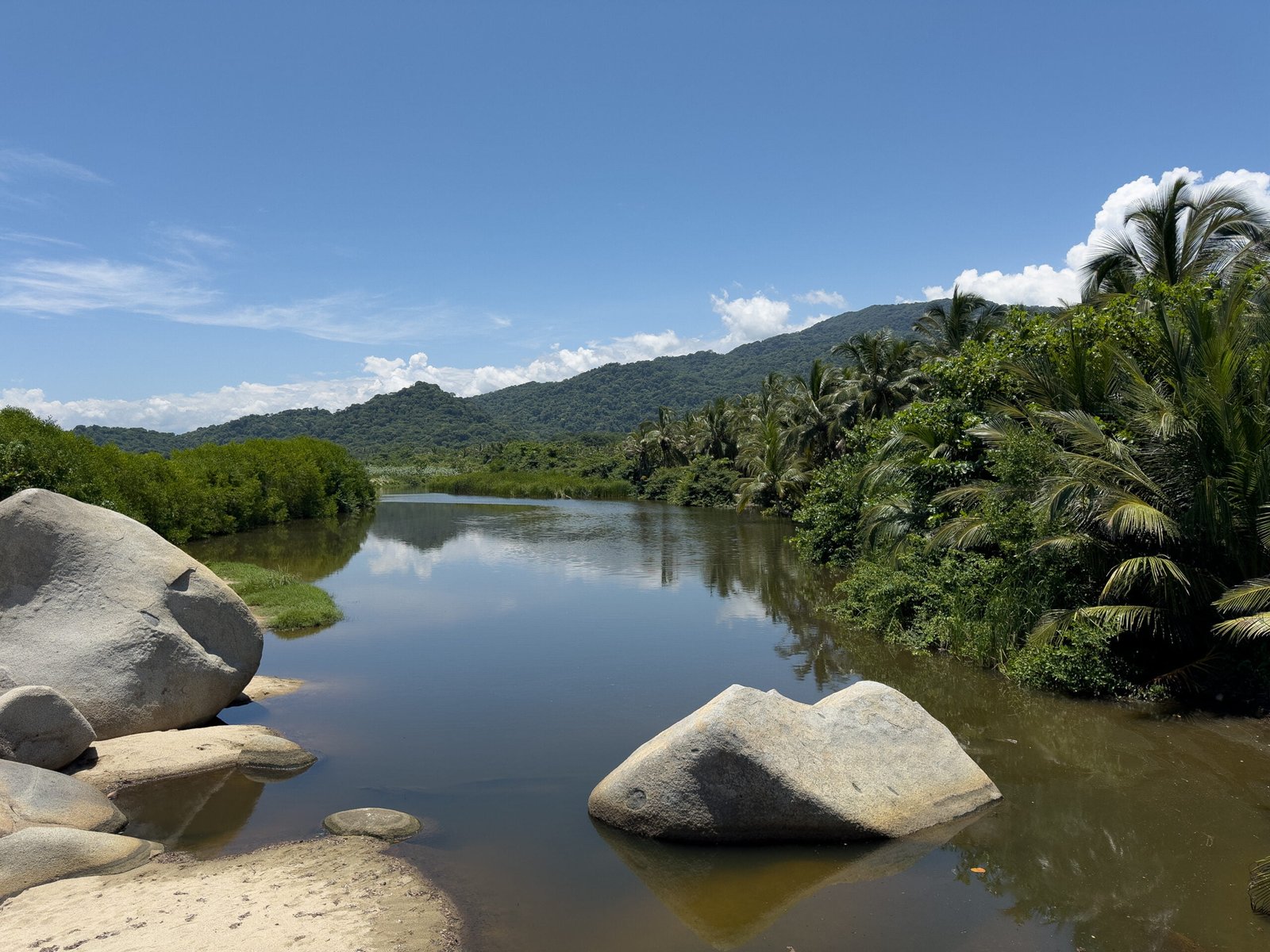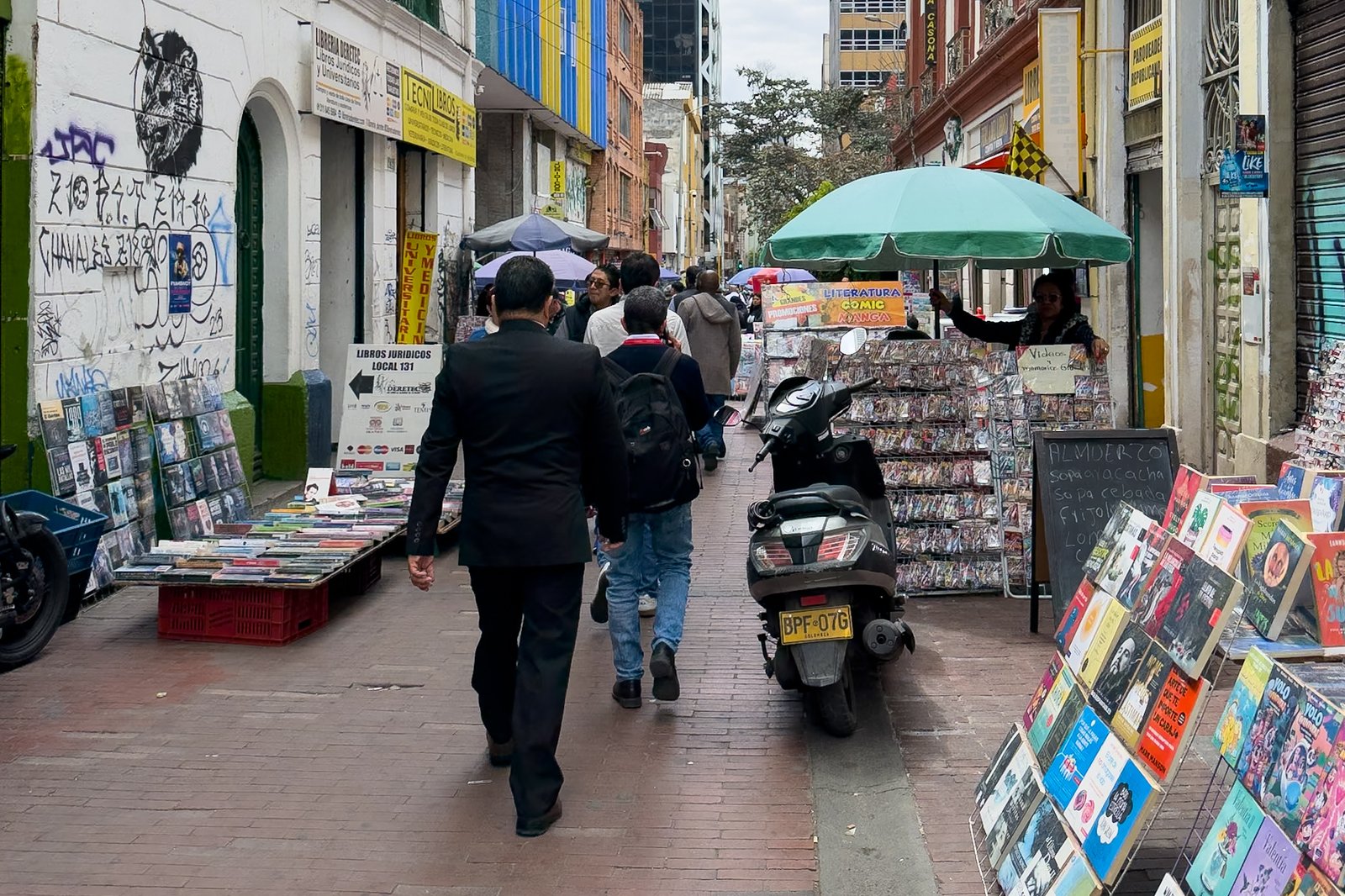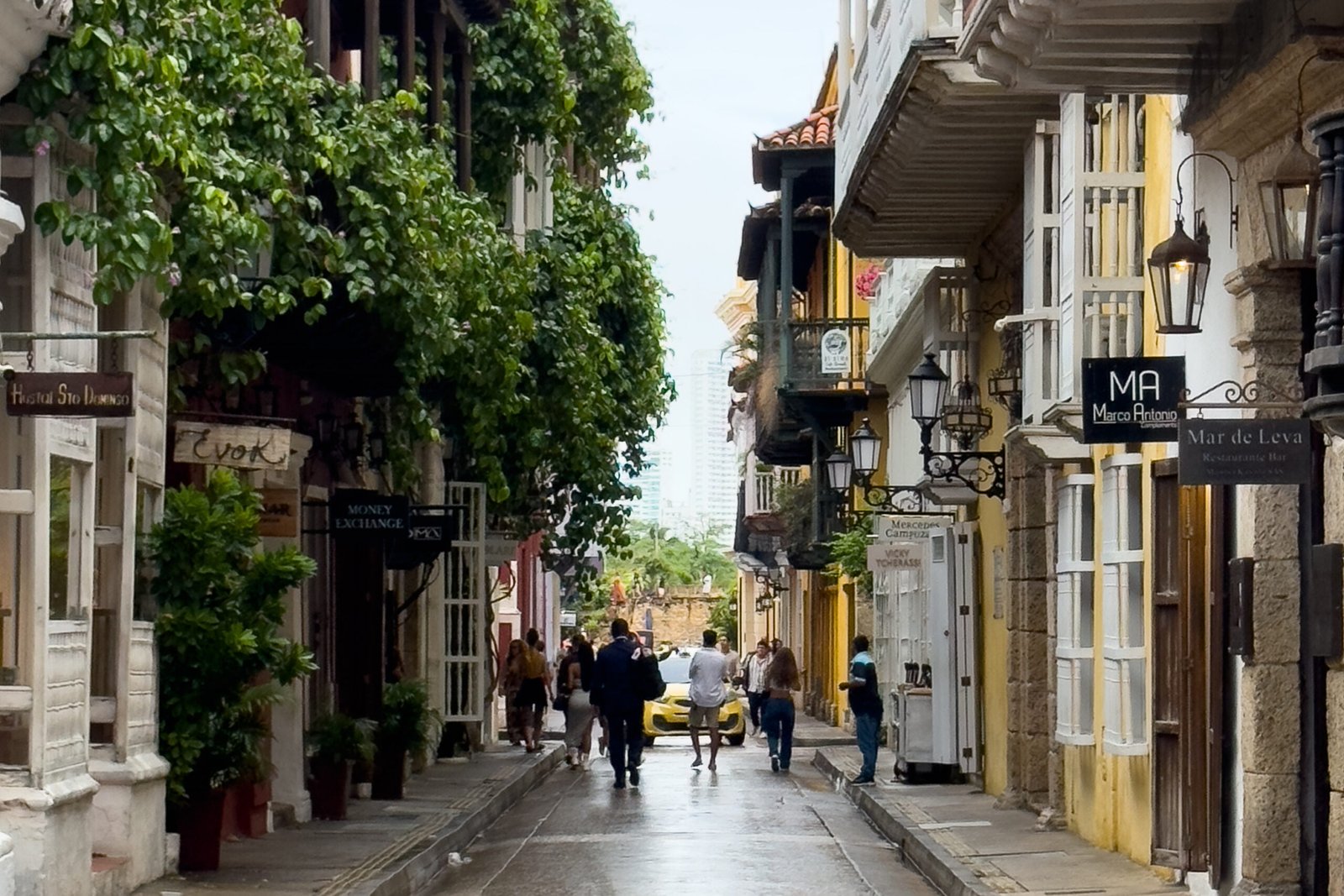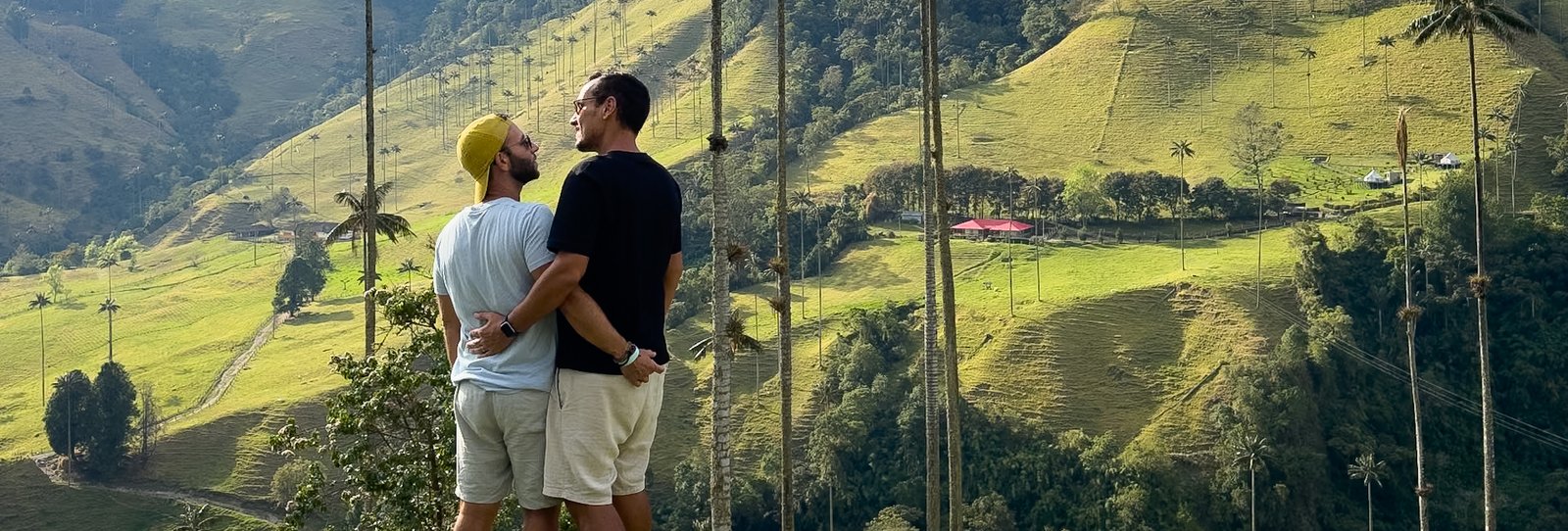Colombia was not our first choice to include in the itinerary of our second trip around the world. For many years, we heard about how dangerous it could be to travel there, especially backpacking. However, the more we researched and read about the country, the more we wanted to visit. That’s how we began planning our Colombia itinerary.
Now that we’ve explored this wonderful country, we can’t help but recommend it. Colombia is amazing, with fantastic beaches, one of the greatest biodiversities in South America, delicious cuisine, and destinations that range from vibrant to tranquil. No matter your interests, Colombia has something for you!
TABLE OF CONTENTS
Is Colombia a Safe Country?
Before we started planning our itinerary in Colombia, we did a lot of research on whether the country was safe or not. Colombia, with its rich culture and stunning landscapes, has become an increasingly popular destination. However, one of the main concerns for those planning a trip to the country is: “Is Colombia a safe country?”. During our trip, we prioritized visiting the safest and most recommended regions for tourists, such as Medellín, Salento, and the Coffee Triangle. While the country has had a past marked by conflicts, many areas today are considered safe, especially those with a well-developed tourist infrastructure.
As with any other destination, it’s important to take basic precautions, but our experience in Colombia was very positive. We felt safe in all the places we visited, and the warmth and hospitality of the Colombian people contributed to an unforgettable trip.
Best Time to Visit Colombia?
The best time to visit Colombia largely depends on the region you want to explore, as the country has quite varied climates, meaning it will depend on your itinerary in Colombia. In general, Colombia can be visited year-round, as temperatures remain stable, especially in areas close to the equator.
We visited the country at the end of August and the beginning of September 2024, and it was a great choice. At this time, we were able to avoid the peak tourist season, which allowed us to explore destinations like Medellín and Salento more peacefully, without large crowds and with more affordable prices. Although it was the rainy season in some regions, such as the Coffee Triangle, the weather was quite pleasant, and the rains did not interfere with our plans.
If you’re thinking about visiting Colombia, keep in mind that the drier months, between December and March, are perfect for outdoor activities and exploring the mountains. However, visiting at the end of August, as we did, can be a great way to avoid the crowds and have a more authentic experience.
Posts About Colombia
Colombia Itinerary
Cartagena – 5 Nights
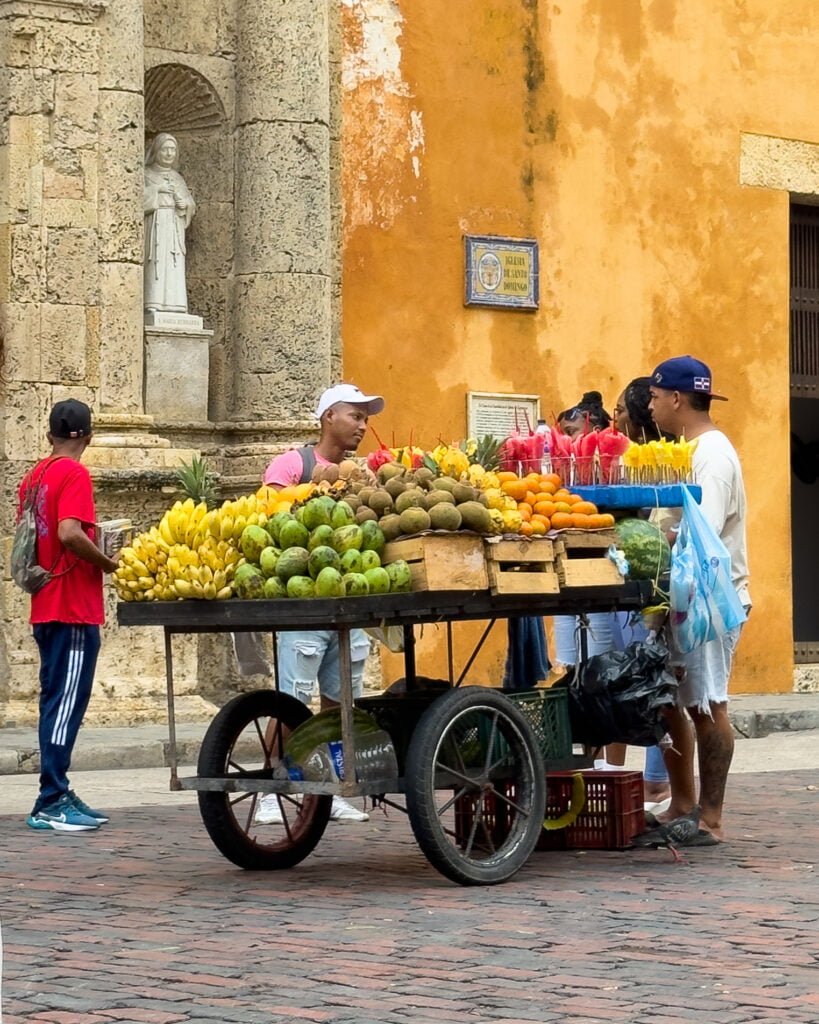
We arrived at Cartagena airport and took a transfer to the city, which went perfectly. We decided to split our stay between the historic center, where we had the chance to stay in an authentic colonial palace, the Casa Pestagua, and the remaining 3 days in the San Diego neighborhood, where we experienced a more local vibe.
Although Cartagena is known for its islands and beaches, which didn’t really appeal to us as they weren’t part of our plans, there’s so much more to see and discover in the city. You can check out all our suggestions in our post about Cartagena.
Santa Marta – 1 Night
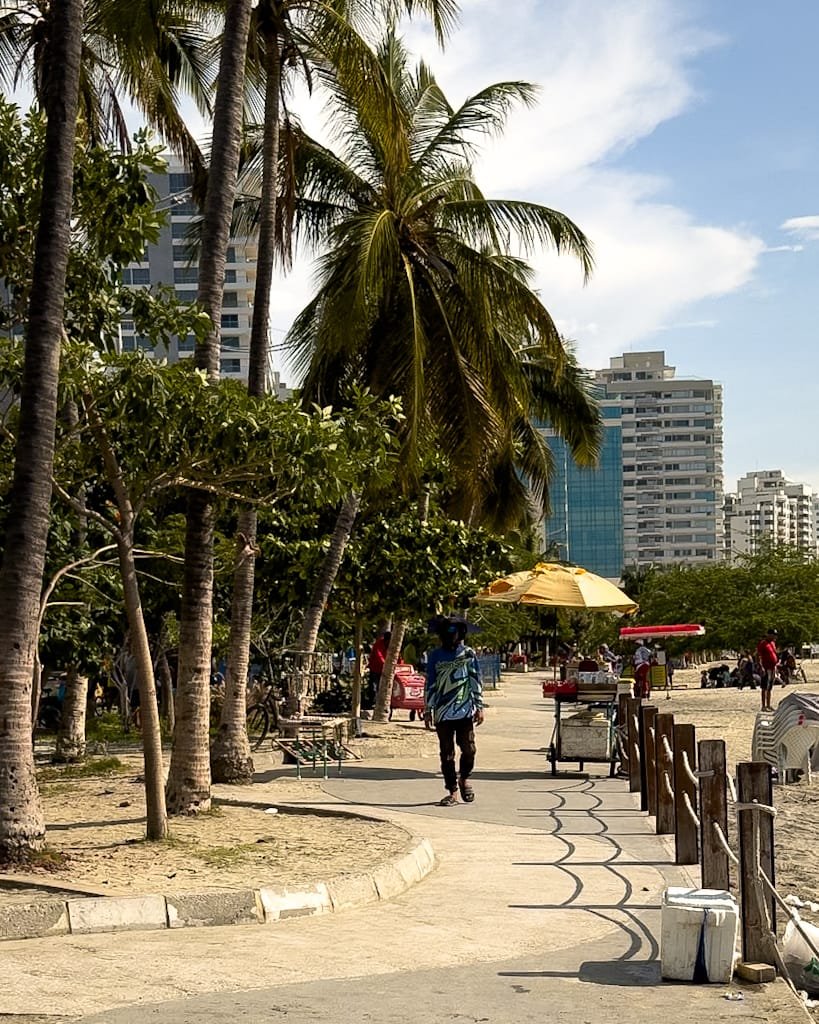
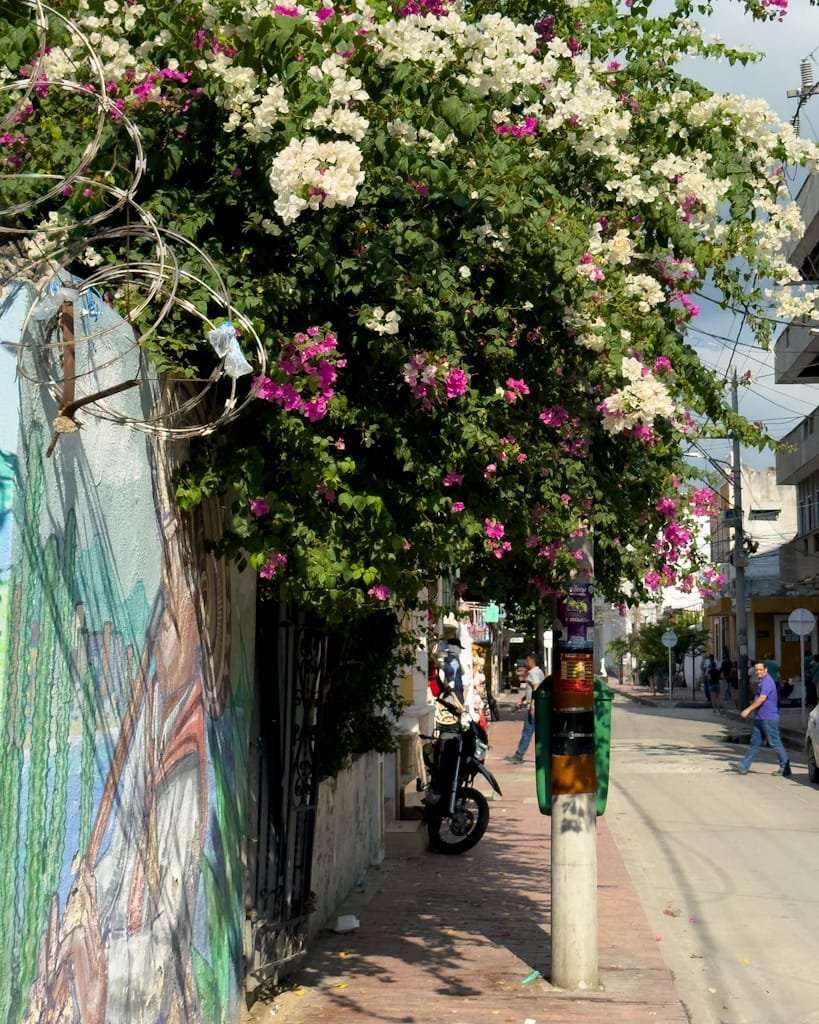
We left Cartagena for Santa Marta on the Marsol bus, which we booked here. We arrived in the city and stayed just one night, as we were heading to Tayrona Park the next day. This made the journey smoother, but you can also skip staying in Santa Marta and go straight to Tayrona Park by taxi upon arrival.
We chose a budget accommodation in the central area to spend the night and rest before continuing our adventure.
Tayrona Park – 2 nights
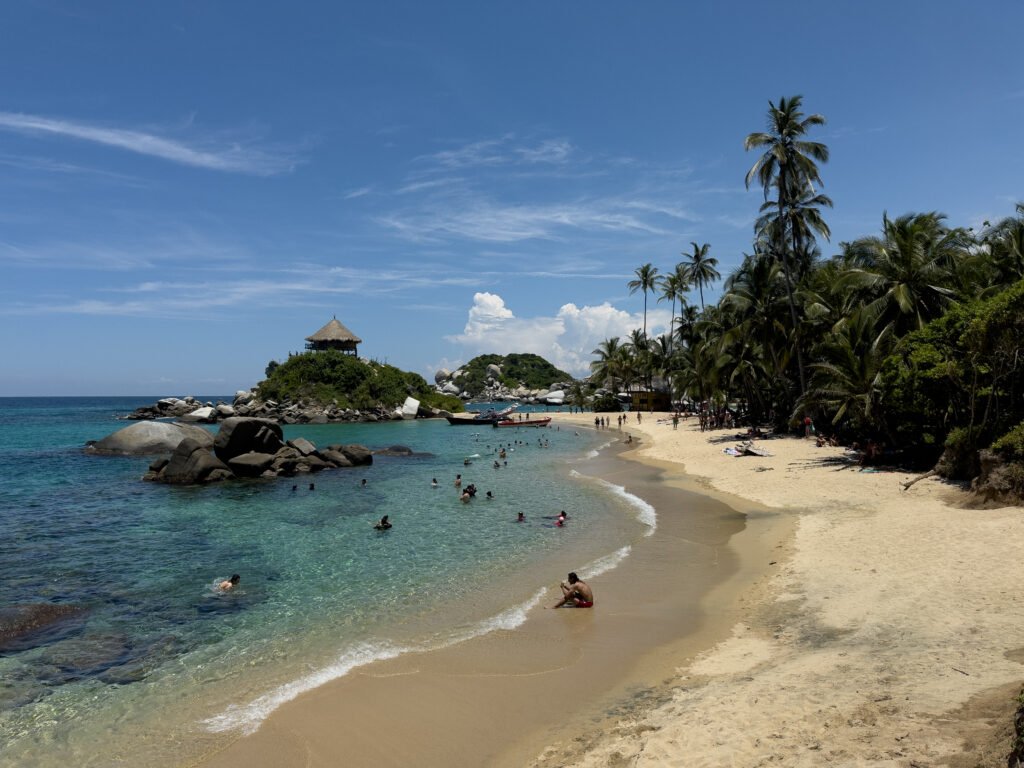
The next day, we took the public bus by the market, heading towards Palomino. This bus has no air conditioning and feels very local, but it can be an interesting experience. If you prefer more comfort, you can take a better-conditioned bus with air conditioning from the Santa Marta terminal. Once on the bus, it’s important to tell the conductor where you want to stop.
We stayed in the Mendihuaca area, a beach zone after Tayrona Park. This region offers more than just the park, and we had the chance to explore the beach the day we arrived.
For more information on how to visit Tayrona Park, check out our post.
Palomino – 4 nights
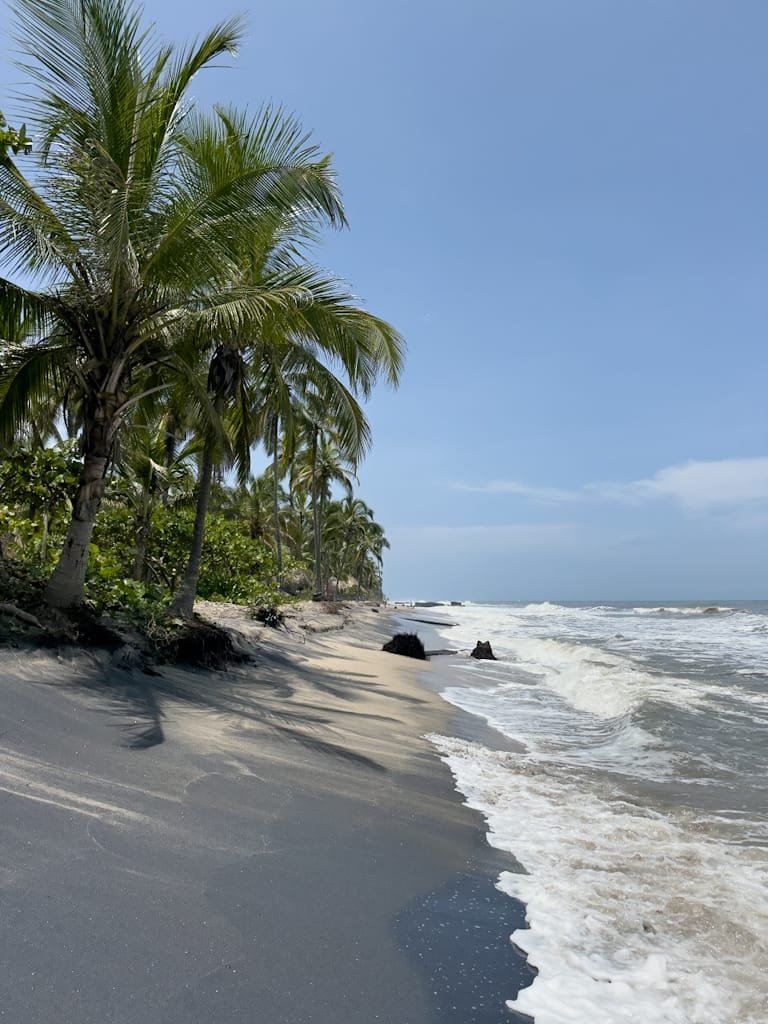
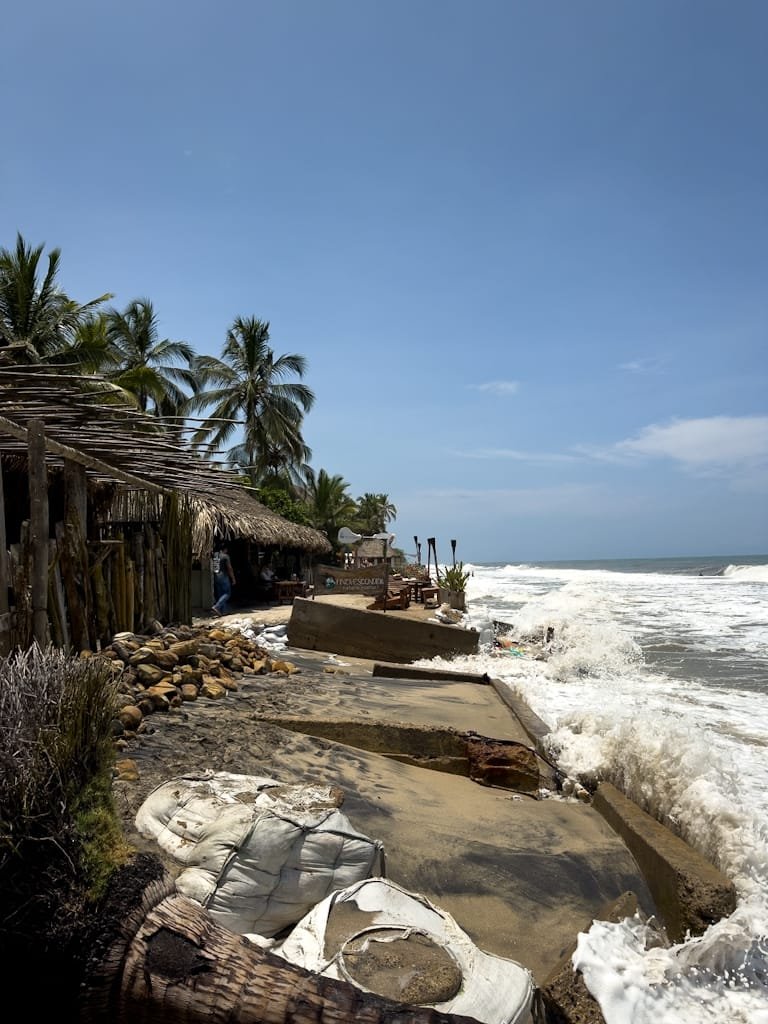
After visiting Tayrona Park, we headed to Palomino. Public buses pass by on the main road, so you just need to signal them to stop. We ended up taking a larger bus with better conditions since the heat was intense. We asked the driver to drop us off at the Palomino gas station, and from there, we walked to our accommodation.
Palomino is a small seaside village that has been slowly consumed by the fury of the ocean over the years. Pictures of paradise-like beaches might not fully reflect what you’ll find, but the village itself has a super relaxed atmosphere, perfect for a few days of rest. Additionally, if you’re into adventure, you can try thrilling activities like tubing down the river!
Santa Marta – 3 nights
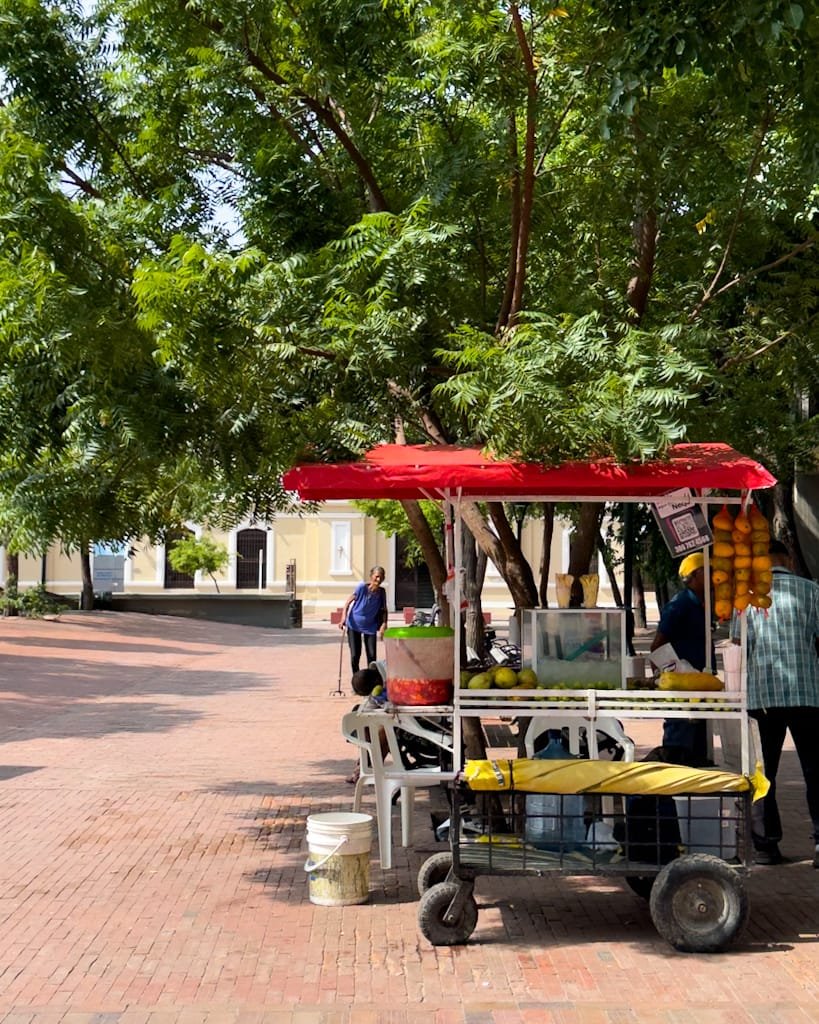
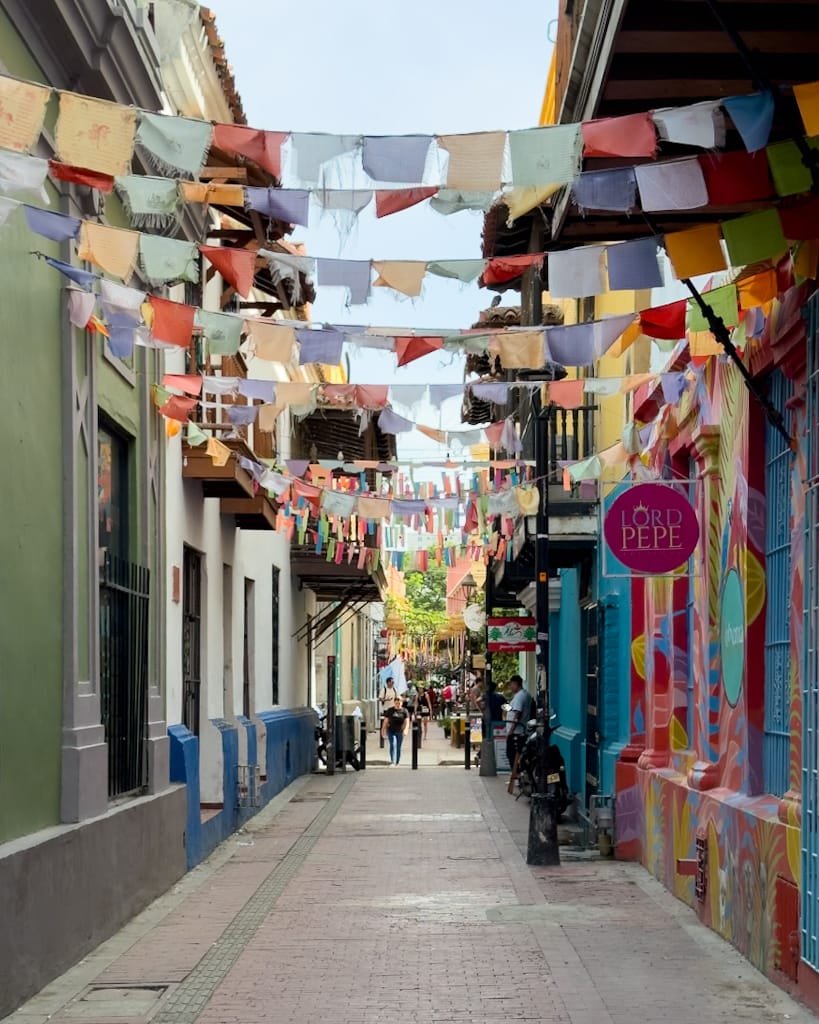
To return from Palomino to Santa Marta, we took another one of the larger buses that regularly run along the main road. This bus dropped us off at the Santa Marta bus terminal.
We had three nights in Santa Marta and used one full day to take a tour to Minca, in the Sierra Nevada mountains of Santa Marta. On another day, we explored the city and discovered its charms.
Medellín – 5 nights
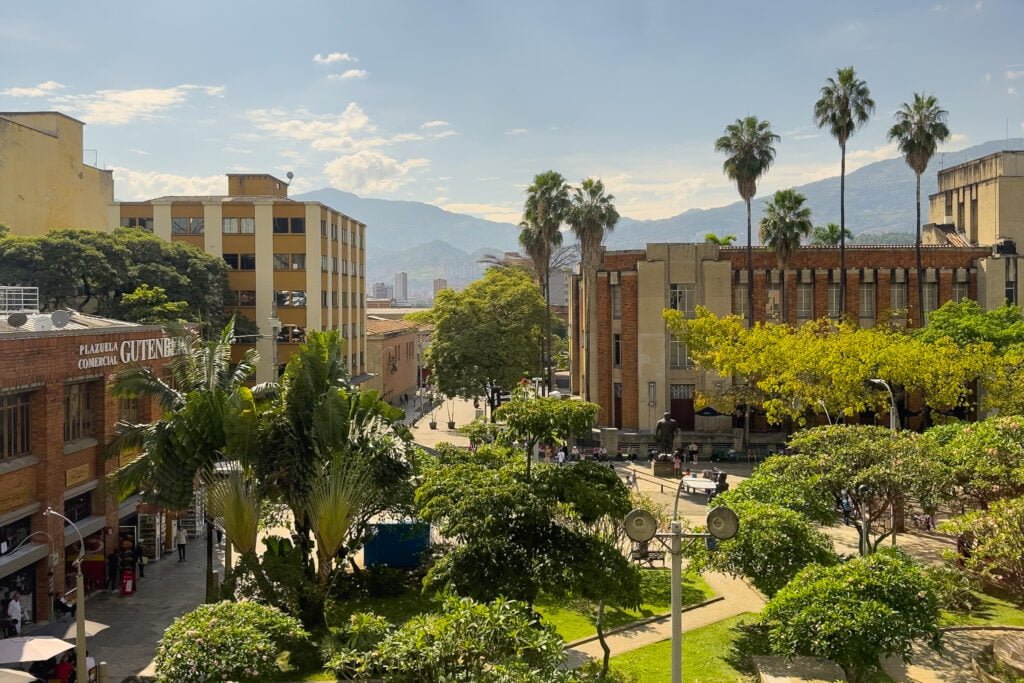
Medellín was one of the cities that surprised us the most. We stayed five nights, which gave us time to explore both the modern and traditional sides of the city. We split our stay between the neighborhoods of Manila and El Poblado, and in El Poblado, we chose the Hotel Du Parc, a mid-range option we recommend for its location and comfort.
During our stay, we took the opportunity to visit Guatapé and climb the famous Piedra del Peñol on a day tour. We also visited Comuna 13, a place with an incredible story of resilience. We dedicated another day to the historic center of Medellín, exploring Plaza Botero and the surrounding area. Another highlight was Mercado del Río, a great spot to try local food, followed by a visit to the Botanical Garden, where we were lucky enough to coincide with the Fiesta del Libro, a lively cultural celebration.
For more details on what to do in Medellín, read our post.
Salento – 3 nights
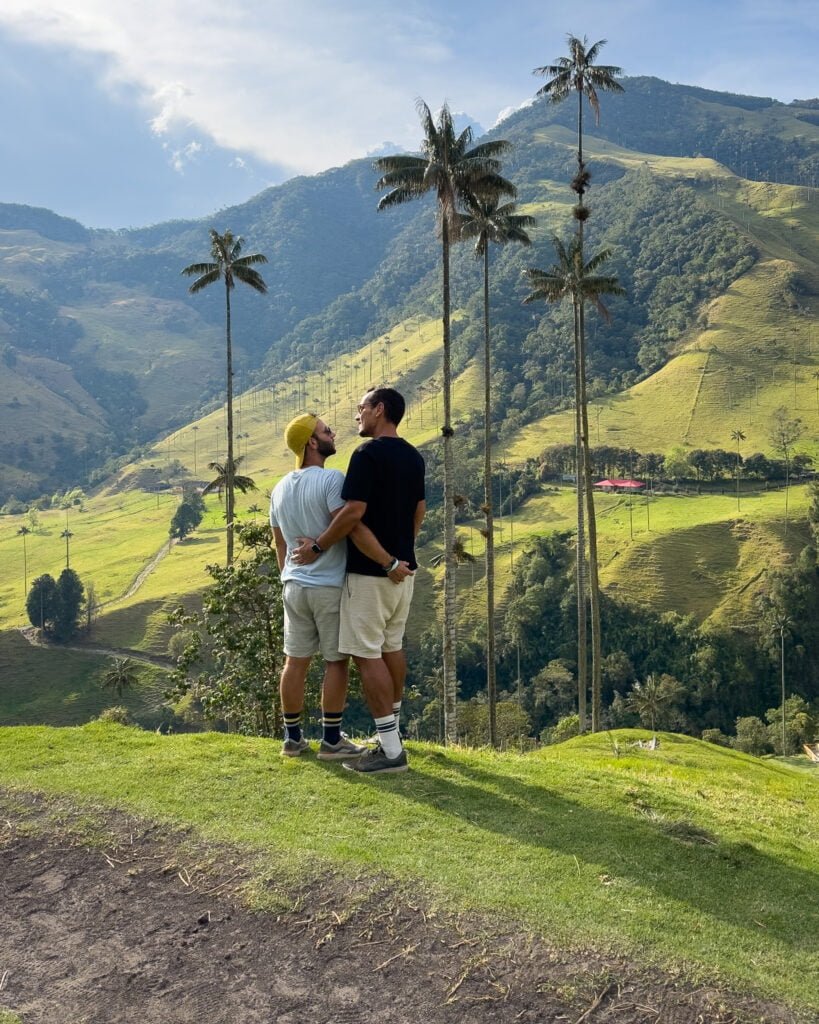
We arrived in Salento from Medellín. We took a flight to Pereira, an Uber to the bus terminal, and then a bus to Salento. Alternatively, you can also go through Armenia.
In Salento, we stayed for three nights, giving us two full days to explore this charming town in the Coffee Region. The tranquility and pleasant temperatures made our stay super relaxing. We visited the iconic Cocora Valley, where we hiked among the towering wax palms, a symbol of Colombia. We also visited a coffee farm, where we learned all about the coffee production process. The town is small but full of charm.
We stayed at the Hotel San Miguel, a colonial house right in the center, and took the opportunity to stroll along the main street, full of craft shops and cozy cafes.
For more details on what to do in Salento, check out our post.
Bogotá – 3 nights
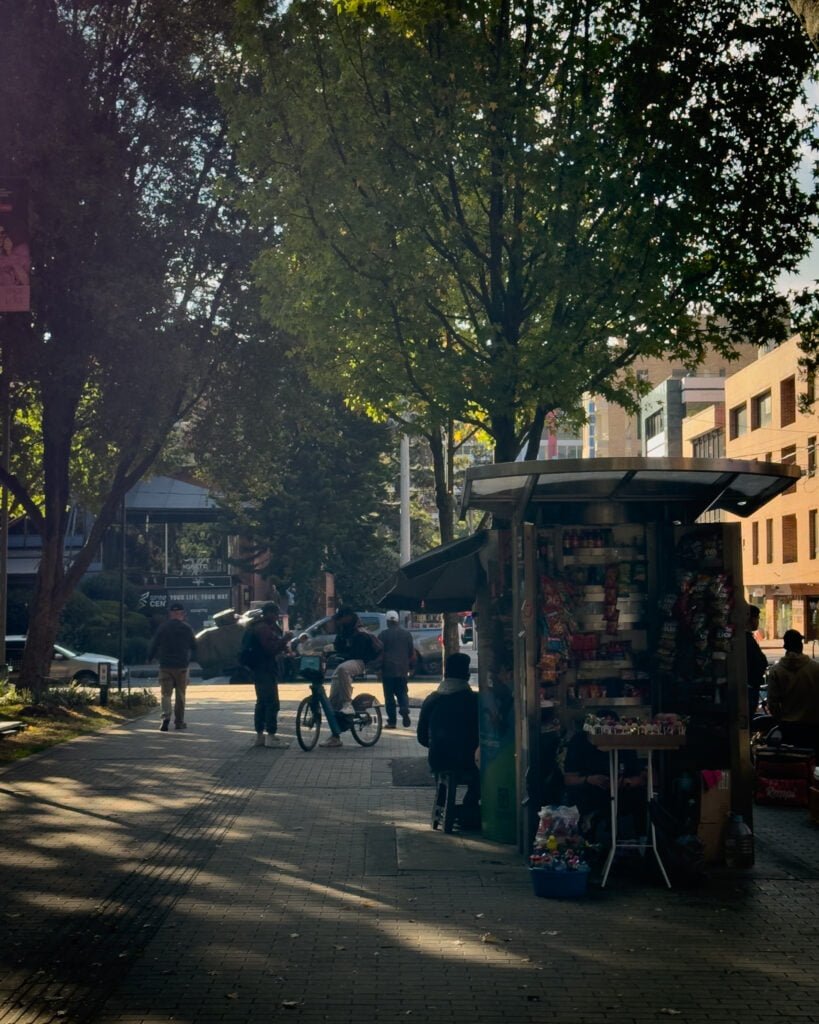
We ended our trip in Bogotá, where we stayed for three nights. To get to the capital, we reversed the journey from Salento to Pereira (or, alternatively, you can go through Armenia).
Bogotá is vibrant and full of contrasts. We stayed at the Bogotá Plaza Hotel, located in the Chicó area, a luxurious yet affordable place with great conditions for digital nomads. Moreover, it’s one of the safest areas in the city.
During our stay, we visited Parque 93, explored the historic center, and took a food tour. Of course, we couldn’t miss visiting La Candelaria, the historic district, with its colorful streets and colonial architecture.
For more details on what to do in Bogotá, read our post.
Safety tips for Colombia
- Get Travel Insurance: Travel insurance, like Heymondo, is essential to protect you in case of unexpected events, such as health issues or cancellations.
- “Don’t Give Papaya”: Avoid displaying valuables like jewelry or expensive technology, so as not to attract attention. The relaxed vibe of some places can give a false sense of security.
- Use Safe Transportation: Opt for safe and reliable transportation. Trusted taxis and Uber (which worked well for us in some places) are good options.
- Avoid Carrying Too Much Cash: Carry only the money you need for the day and use cards whenever possible, as many places accept them.
- Avoid Unknown Areas: Don’t venture into areas you don’t know without a clear reason or without being sure of the safety of the location.
- Stay Aware of Your Belongings: Always keep an eye on your belongings, especially in busy places or on public transport.
- Avoid Walking at Night: Try to avoid walking around at night, especially on deserted or poorly lit streets.

